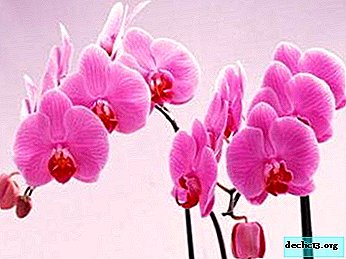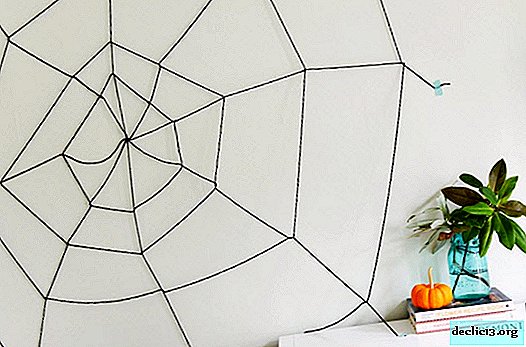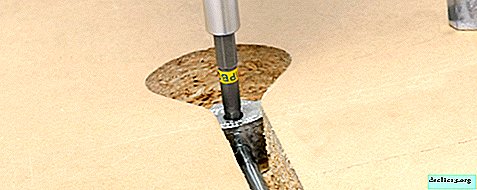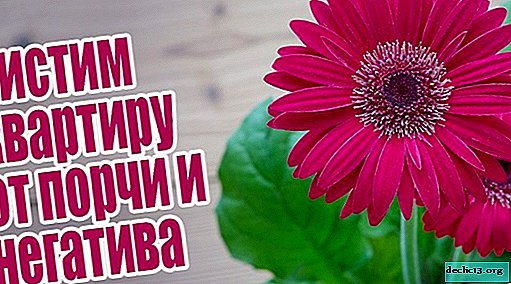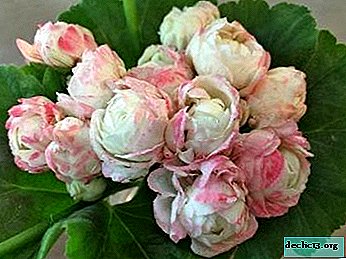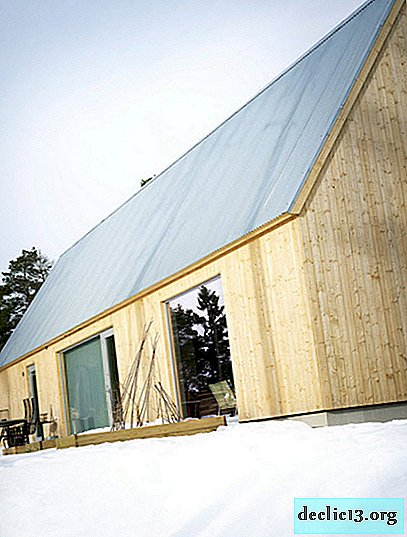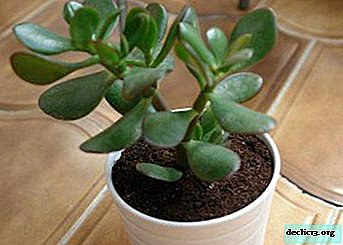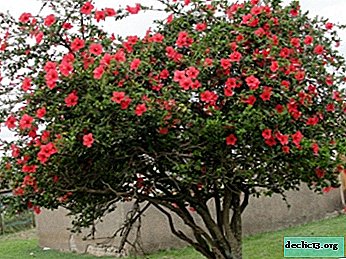These amazing hedgehog flowers are echinocactus: how to grow and care for succulents?
 Echinocactus are extraordinary spiky balls, which are also called "living fossils", because their appearance has not changed for thousands of years. An amazing flower has long delighted plant growers with its unique appearance and unpretentiousness in home care. In this article we learn about the most popular types of echinocactus, the rules for the care and reproduction of echinocactus at home, about flowering and actions if the cactus does not bloom, as well as about pests.
Echinocactus are extraordinary spiky balls, which are also called "living fossils", because their appearance has not changed for thousands of years. An amazing flower has long delighted plant growers with its unique appearance and unpretentiousness in home care. In this article we learn about the most popular types of echinocactus, the rules for the care and reproduction of echinocactus at home, about flowering and actions if the cactus does not bloom, as well as about pests.
Botanical Description
Echinocactus (lat. Echinocactus) - a perennial succulent plant from the Cactus family. The genus includes 6 species. Distribution area - southwest USA, deserts of Mexico. Despite the slow nature of growth, the plant in natural conditions can reach gigantic sizes (3 m in height and 1 m in width).
The maximum recorded age of this species of cactus is 500 years, and the mass is one ton. Echinocactus is easy to distinguish from other cacti due to its spherical shape of the stem with numerous protruding ribs covered with thorns. 25-50 ribs are arranged vertically.
Reference! The name came from the confluence of the roots of "echinos" - "hedgehog" and "cactus" - due to the external similarity of the plant with an insectivorous mammal.Therefore, the people have the name "Hedgehog Cactus." Echinocactus - the oldest cacti on earth, evolutionarily stand out 30-35 million years ago. They were first described by sailors who landed in the New World. The first botanical description of the Cactus family was given by Carl Linnaeus in 1737. At the beginning of the 20th century. There were 200 species, which later became separate genera.
The main types and photos with them
We will analyze what the main types of plants are, and see how they look in the photo.
Gruzoni

Gruzoni is the most popular species for ornamental cultivation.. The species is named after the German industrialist and cactus collector Herman Gruzon. Other common names: "golden ball", "golden barrel", "mother-in-law pillow" - obtained due to the sharp golden spines and bright yellow crown located on a dark green trunk.
Echinocactus Gruzoni red should also be highlighted. A similar coloring is achieved using food colors, which are mixed in water for irrigation. If you stop adding dye, the color of the needles pretty quickly returns to natural.
Horizontal

Horizontal - one of the smallest representatives of the species, reaches a diameter of no more than 25 cm. The stem is gray-blue in color, with a small number of ribs - 10-15. Spines are collected in bundles of 6-9 pieces. The flowers are red with a purple tint. Easy to grow at home.
Care Rules
- Rare basal irrigation with protected water.
- Bright, sunny lighting.
- In summer, the content is in hot temperature, in winter in cool.
- Fertilizing during growth (from spring to late autumn).
- Transplant every four years.
- Landing in a mixture of sheet and turf land with a sand and gravel mixture.
Read more about caring for echinocactus at home and in the open ground in this article.
To avoid any problems with the care of echinocactus, watch the video:
Propagation at home
 Echinocactus can be propagated in two ways - by children and seeds.. The second method gives almost 100% germination.
Echinocactus can be propagated in two ways - by children and seeds.. The second method gives almost 100% germination.
Seeds:
- Soak the seeds in warm water for several hours.
- In the middle of spring, sow in the sand without deepening.
- Cover with a transparent film and place in a well-lit place.
- Seedlings must be aired and periodically sprayed with a light solution of potassium permanganate.
- 15-20 days after emergence, the sprouts dive in separate pots.
Children (lateral offspring):
- Children are separated from the mother plant in the spring.
- Places of cuts are processed by crushed charcoal.
- Dried babies are placed vertically in an empty plastic container.
- Children are aged until the roots.
- Then the baby is installed at a shallow depth in the substrate.
Features of cultivation and propagation in open ground
Echinocactus cultivation in open ground is possible in a warm climate, or in specially adapted greenhouses or greenhouses.
A big plus of this kind of growing is the lack of restrictions on the possibility of plant growth. For growth, you must leave the widest possible radius (about 2 meters) around the sprout.
The care and reproduction of echinocactus is subject to the same rules and principles as the cultivation of home conditions. However, in open ground, regular weeding and spraying of the plant from pests and diseases will also be required. The main requirement for care will be the restoration of the conditions of natural growth.
Important! Remember about the low frost resistance of the plant and avoid negative temperatures.Bloom
 Consider how a home plant blooms. Echinocactus flowers appear on the top of the stem at the 20th year of life. Depending on the type, buds are yellow, pink or red. Flowers are arranged on a short tube. They are characterized by a bell-shaped form and felt pubescence, often the flowers are arranged in several circles. Typically, buds appear in early spring, during the period of active growth, and bloom by mid-autumn.
Consider how a home plant blooms. Echinocactus flowers appear on the top of the stem at the 20th year of life. Depending on the type, buds are yellow, pink or red. Flowers are arranged on a short tube. They are characterized by a bell-shaped form and felt pubescence, often the flowers are arranged in several circles. Typically, buds appear in early spring, during the period of active growth, and bloom by mid-autumn.
At home, a flowering specimen of echinocactus is a rare phenomenon.
What to do if it does not bloom?
To stimulate the growth of echinocactus, you can:
- to carry out in warm time to fresh air, under direct sunlight, to provide a temperature difference at night;
- to feed with fertilizers during the growing season (liquid fertilizers for succulents);
- providing a period of rest in the winter;
- follow the recommendations for caring for the plant.
Diseases and Pests
Diseases and harmful insects can interfere with the harmonious development of echinocactus:
- stem rot - with waterlogging of soil and air;
- shrinking of the stem - with insufficient watering;
- damage to the leaves and stems by pests (cactus corpuscle, tick, scabbard, mealybug, etc.) - plaques, brownish spots or whitish bloom are formed.
In order to avoid the death of the plant, it is necessary to take actions appropriate to the disease in time and, as a preventive measure, inspect the cactus for the appearance of developmental abnormalities or visual defects.
Similar plants
Echinocactus flowers can be confused with other related cactus:
- Gimnokaltsiumom Mikhanovich - a small rounded cactus with flowers on the crown;
- whitening trichocerius - oval succulent with white fragrant flowers;
- Mammillaria - a cactus of spherical or cylindrical shape with flowers of different colors, located around the circumference;
- tiny rebucia - a bush of small spherical stems with flowers of bright hues;
- Otto notocactus is a cylindrical cactus with large yellow flowers.
Everyone who grew echinocactus in the house understands that this is an amazing and not whimsical plant. It will delight with its appearance, regardless of whether it will be possible to achieve flowering or not.

